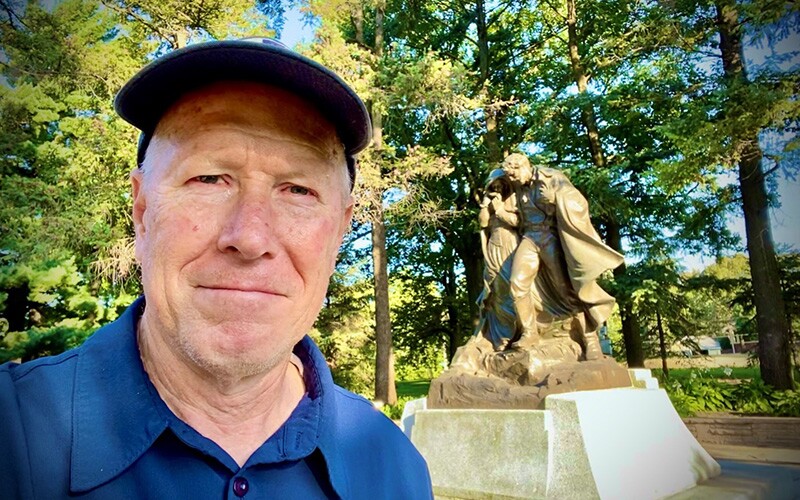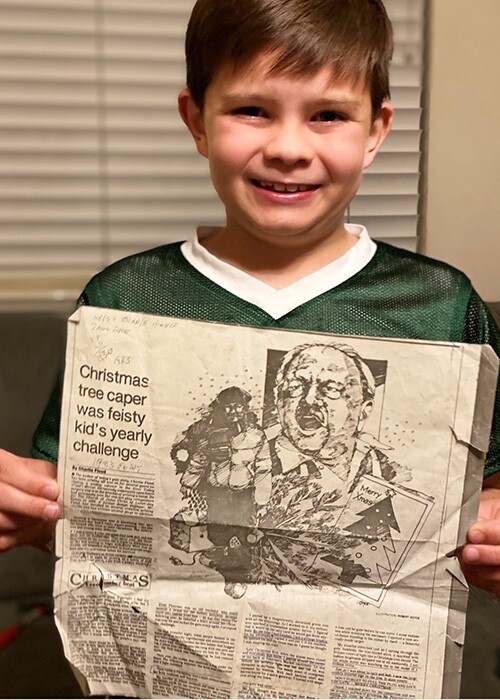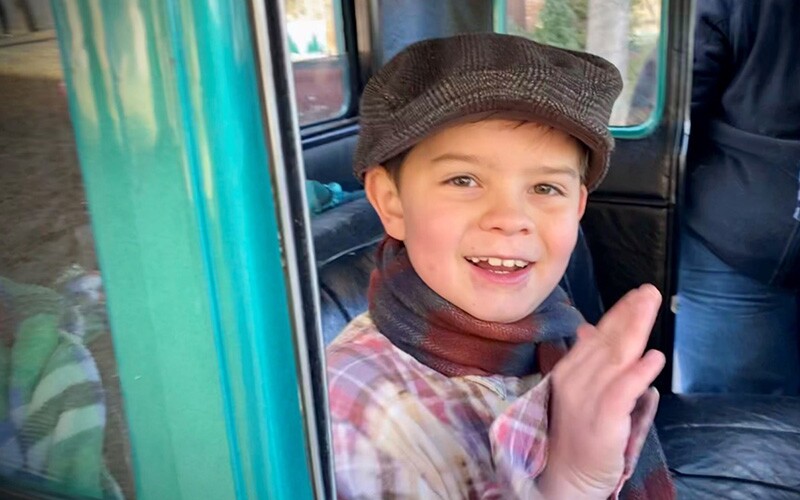“Bringing legacy stories back to life” is the theme of Kevin Mitchell’s life. That is literally his life focus—and is quite a mission to accomplish. It is, however, a family mission, so he has help implementing his vision. He and his wife and 2 sons (of 8 total children) work together to help bring stories to life through movies, thus creating a living legacy of those who have gone before.

Inspired by Family Stories
Kevin Mitchell has always been inspired by the stories of his ancestors. He speaks of his ancestor John Pack, who started the University of Deseret (now known as the University of Utah) in his own home and his great-grandfather who was a stone mason for the Nauvoo Illinois Temple of The Church of Jesus Christ of Latter-day Saints. He also tells of inspiration from his own Grandpa Elmo Pack, who was the principal of Olympus Junior High School in Salt Lake City, Utah, and how he wrote family history vignettes for his posterity to enjoy.
Kevin maintains that “we all have a movie in us we can tell,” which is an exciting concept. Each of us—no matter our age or background—has “a movie within us.” But how do we tell that story?
Mitchell’s Movie-Making Career
Kevin Mitchell seems to have always been interested in making movies. He attended Brigham Young University where he majored in Broadcast Journalism, and he has been documenting history ever since. His efforts have taken him around the world, and he has been involved in some unique and exciting projects through the years, including a documentary about the legendary BYU football coach LaVell Edwards.
Kevin Mitchell’s TV Series, Legacy West
One such project was his 1997 documentary series called Legacy West, which was about the wagon trains of the west. The TV series followed a wagon train that re-enacted the route, daily routines, and stories of many pioneers who crossed the United States plains from 1846 through the coming of the railroad in 1869.

Traveling in his own RV (a modern “covered wagon”), Kevin Mitchell documented the wagon train every step of the way. He lived the pioneer life, which he called “roughing it easy,” and documented all aspects of it. He saw the challenges, the setbacks, and the problems the pioneers probably faced. But he also knew and felt the excitement and thrill of the journey—every day of the journey for 111 days. They filmed an episode for each week on the trail as it was happening in real time. Then each episode aired the week after.
Following the original route of the pioneers of The Church of Jesus Christ of Latter-day Saints, Kevin and his team re-enacted and documented various scenes that really happened all those years ago. Kevin says that like the real pioneer experience, people on the re-enactment trek developed communities to support one another. We often believe that the original pioneer experience was filled with trauma and challenges, but it was mostly “a great adventure,” says Mitchell. Following his travel with the 1997 re-enactment wagon train, Mitchell broadcast seventy episodes on his “Legacy West” television series—talk about bringing legacy stories back to life!
Making and Remaking “Charlie’s Christmas”

Kevin Mitchell has been in the right place at the right time on many occasions. Some of those occasions have been high-profile stories, but he has also relished in the not-so-common stories—legacy stories of small families and individuals who quietly lived and passed with relatively few making note of them. Such is the case with the story of “Charlie’s Christmas.”
Kevin Mitchell first heard of Charlie after reading a 1983 article in the Deseret News titled “Christmas I Remember Best,” which told Charlie’s Christmas story of nearly a hundred years ago. On the official record, “Charlie” was Charles Floyd Flood, born on 20 July 1917 in Omaha, Nebraska. Charlie was one of those guys who just lived each day and did the best that he could. He wasn’t famous, but he was loved by generations of his family. Born to Charles Albert Flood and Selma Alida Falk, who were both deaf, Charlie knew sorrow and challenges. His father died when Charlie was just a boy—leaving his mother alone to make ends meet for Charlie just as America entered into the Great Depression.
Charlie’s heart-warming story tells of the family struggles and how a local storekeeper did his quiet part to help the struggling family each year with a Christmas tree. And though the storekeeper didn’t know Charlie’s full story, he played into it and helped Charlie get a tree for his family for Christmas.
In 1984, Kevin Mitchell created a video about this story, and in December 2021, he and his KINtv.com team created a reboot. (The YouTube video below is in English, but you may view it with translated subtitles.)
They worked to create authenticity with the video by researching the original circumstances, the dress of the day, and other details. They kept the voice of the original Charlie telling the story and were able to recreate his story with an actual great-grandson playing the part of the boy as the story was told.
Whether the world will see this production makes no difference. Charlie’s family will forever remember him because his legacy story was brought to life.
How to Bring Your Legacy Stories to Life
Kevin Mitchell believes that all families can create videos of their past, yet he comes across many folks who believe that such an activity should be reserved for the geriatric ward. “That is just not true!” he says. “Family story-telling and video-making should be a family event.” And with today’s technology, young people are likely to know more than their seniors when it comes to creating a movie.

“It doesn’t have to be epic,” Mitchell says. We cannot be—nor do we all need to be—a Steven Spielberg to make a home movie come to life. (But incidentally, Spielberg himself got his start making amateur movies with his father’s video camera on Boy Scout outings.)
Mitchell, who recently won the RootsTech video production competition, has some hints for would-be award-winning videographers (at least award-winning for the family). In keeping with his philosophy that “we all have a movie in us,” he suggests the following plan for bringing legacy stories back to life for your own family:
- Find a family story to re-enact. This can be as simple as grandpa sharing “the good old days” with his posterity and letting the young’uns know that grandpa had a youth experience too.
- Research and authenticate the story. Get the dates and the facts behind the story. Interview older family members who may have been there when this story happened or who might know the facts. (Try to separate the stories passed down from the real facts.)
- Write a narrative and create a story board of the story. You can do this by writing a narrative, sketching it out in story boards, and then picking the scenes for the movie. This will help you to envision the story before you start filming.
- Try to help your family envision the original scene: where it was, who was there, how it happened, what was said, and when it happened. Is the original location of the story still there? What does it look like now? Find clothing that fits the story, and go to the place where the original event occurred, if possible.
- Use family members to play the parts in the movie. Find a direct ancestor to play the main part or narrate the story, and use other family members as supporting characters.
- Film the re-enactment. Practice the scene a few times, but don’t forget to have fun. Enjoy this time together, and let the actors be in the moment and feel the spirit and story of their ancestors.
- Once you finish the movie, find a way to showcase the video with other family members. This could be at a family reunion or a family gathering, or it could be shared through a link online.

It sounds pretty simple, and it can be. Mitchell now owns his own studio (Mitchell Productions in Orem, Utah) where he creates professional videos, but again, your family movies don’t have to be professional. He says that often he is able to get student movie directors from nearby colleges to direct his movies. These students often need to create a video for their school class assignments and are often seeking a video that they can direct. He has advanced to hiring professional sound and lighting personnel, but he stresses that this is not necessary with today’s technology. “Even a good cell phone camera will work,” he notes.
And once you have created your movie, he says, “Be sure to share with family members.” A good place to share legacy stories is on FamilySearch.org through FamilySearch Memories. Currently, FamilySearch doesn’t have the capacity to allow videos to be posted to Memories, but narrations and photos can be posted for future generations to enjoy.
Remember that, as Mitchell reminds us, “We all have a movie in us we can tell,” and we can each help to “bring our legacy stories back to life.” That is our challenge. So, what’s your movie about?
Author’s Note: Kevin and his wife will soon be off on a new adventure. They have accepted a call to serve a mission for The Church of Jesus Christ of Latter-day Saints in Finland. On his mission, he and his wife will continue to do video productions.

